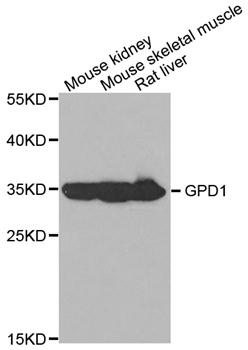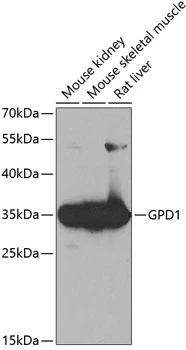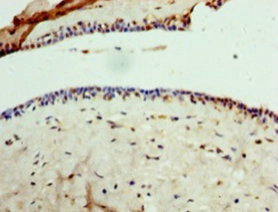GPD1 antibody [HL1959]
GTX637796
ApplicationsImmunoFluorescence, Western Blot, ImmunoCytoChemistry, ImmunoHistoChemistry, ImmunoHistoChemistry Paraffin
Product group Antibodies
TargetGPD1
Overview
- SupplierGeneTex
- Product NameGPD1 antibody [HL1959]
- Delivery Days Customer9
- Application Supplier NoteWB: 1:500-1:10000. *Optimal dilutions/concentrations should be determined by the researcher.Not tested in other applications.
- ApplicationsImmunoFluorescence, Western Blot, ImmunoCytoChemistry, ImmunoHistoChemistry, ImmunoHistoChemistry Paraffin
- CertificationResearch Use Only
- ClonalityMonoclonal
- Clone IDHL1959
- Concentration1 mg/ml
- ConjugateUnconjugated
- Gene ID2819
- Target nameGPD1
- Target descriptionglycerol-3-phosphate dehydrogenase 1
- Target synonymsGPD-C, GPDH-C, HTGTI, glycerol-3-phosphate dehydrogenase [NAD(+)], cytoplasmic, epididymis secretory sperm binding protein, glycerol-3-phosphate dehydrogenase 1 (soluble), glycerol-3-phosphate dehydrogenase [NAD+], cytoplasmic, glycerophosphate dehydrogenase
- HostRabbit
- IsotypeIgG
- Protein IDP21695
- Protein NameGlycerol-3-phosphate dehydrogenase [NAD(+)], cytoplasmic
- Scientific DescriptionThis gene encodes a member of the NAD-dependent glycerol-3-phosphate dehydrogenase family. The encoded protein plays a critical role in carbohydrate and lipid metabolism by catalyzing the reversible conversion of dihydroxyacetone phosphate (DHAP) and reduced nicotine adenine dinucleotide (NADH) to glycerol-3-phosphate (G3P) and NAD+. The encoded cytosolic protein and mitochondrial glycerol-3-phosphate dehydrogenase also form a glycerol phosphate shuttle that facilitates the transfer of reducing equivalents from the cytosol to mitochondria. Mutations in this gene are a cause of transient infantile hypertriglyceridemia. Alternatively spliced transcript variants encoding multiple isoforms have been observed for this gene. [provided by RefSeq, Mar 2012]
- Storage Instruction-20°C or -80°C,2°C to 8°C
- UNSPSC12352203






